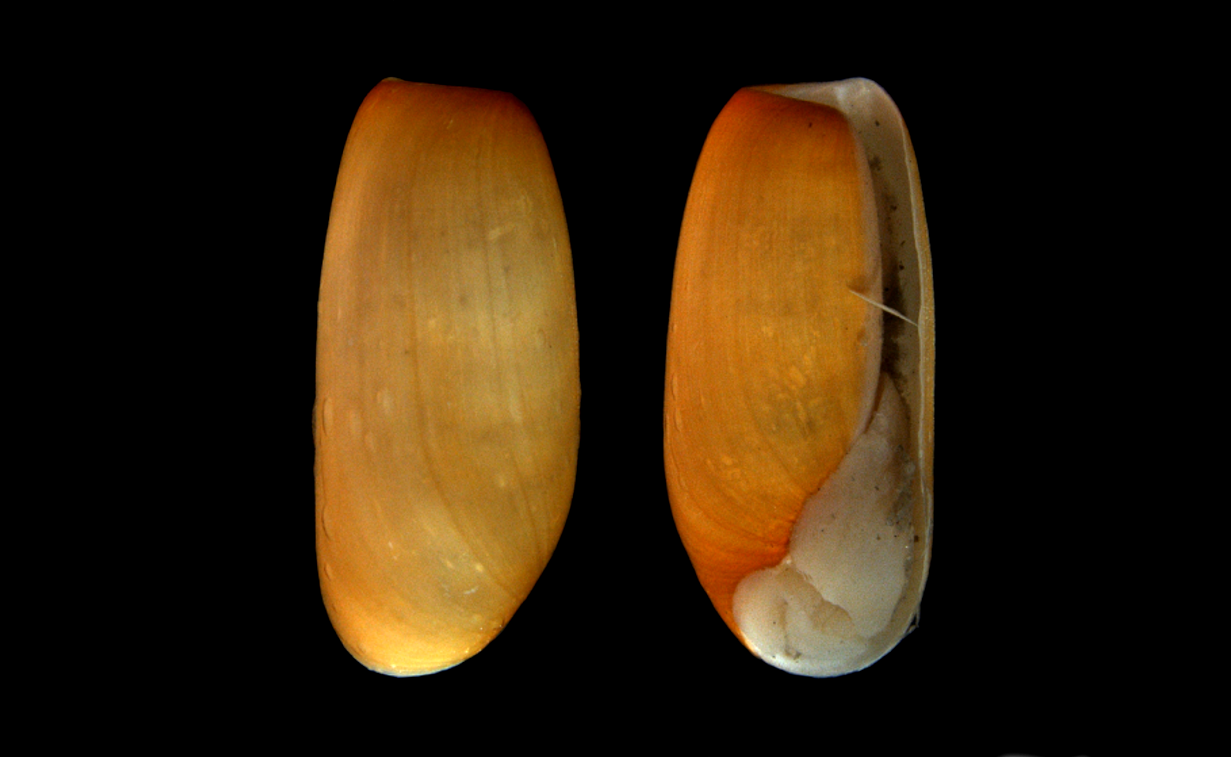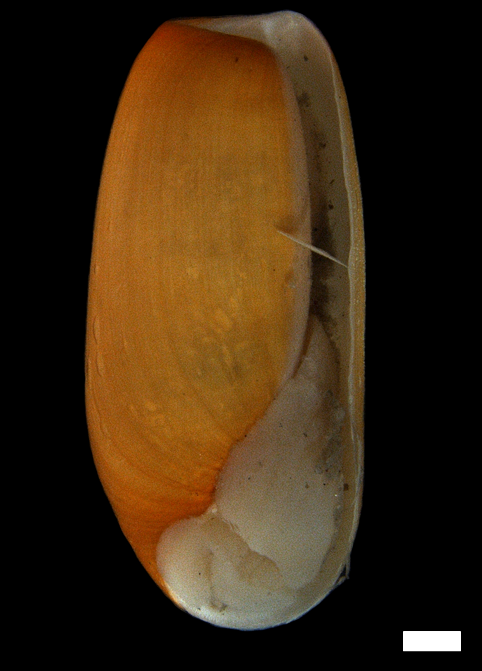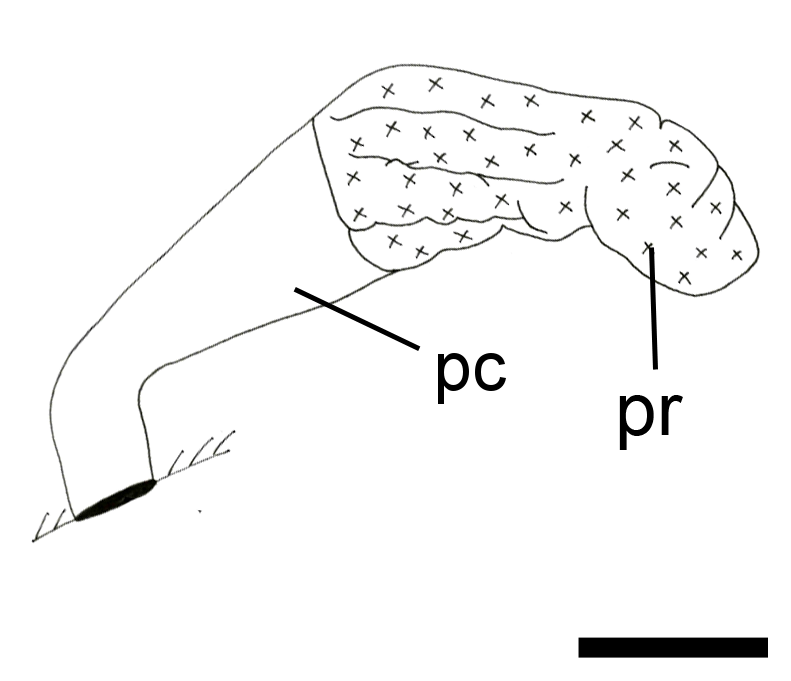Cylichna alba
Shell description
The thick shell is external and white to whitish transparent in colour, usually with an elongate cylindrical shape; the outline is more rounded in the front and hind part, when viewed from above. The opening is small, but extends the length of the shell. The top of the shell (apex) is sunken and covered by parts of the shell. The shell is not umbilicated. The shell has a pattern consisting of faint spiral grooves and growth lines. The shell surface is covered by a thick, transparent to brownish-orange outer layer (periostracum). The length of the shell ranges between 5.6–10.8 mm.
Animal description
The body is white in colour, and the head shield is lobed towards the back and there is no middle line. There are no side extensions of the foot (parapodial lobes) and no extension of the mantle under the snail (pallial lobe). The larval kidney is not visible trough the shell.
Anatomy
The radula consists of 14–17 rows of teeth, where on each side we find 3–7 outer lateral teeth, one inner lateral tooth and a central (rachidian) tooth. The central tooth often bears denticles. The inner lateral teeth are curved with a broad basis, and the inner edge carries coarse denticles. The outer lateral teeth are curved with a broad basis; and the inner edge may carry delicate spines. This species has jaws. The gizzard is cylindrical and surrounded by thin muscle fibres, and contains three equally sized, kidney bean shaped plates. The dorsal surface of the plates often have a raised field, this surface is also covered by crystal-like needles and smooth pits. The underside of the plates has a net-like pattern of pits. Some specimens have spines that run parallel to the gizzard plates; the spines can be missing and in these cases parallel folds are present. The foregut carries a small crop with strong folds. The male reproductive system consists of a flat, white penis chamber that narrows towards the genital opening and a thick, yellowish prostate clearly separated from the chamber. The prostate has folds.
Ecology
Occurs on soft bottom sediments, as clay, sand and on hard bottom sediments as small stones and mud in depths between 8–807 m.
Geographical distribution
Occurs along the whole coast of Norway, Ireland and the Faroe islands (Thompson 1988, Sneli et al. 2005, Høisæter 2009).
References
Høisæter T (2009). Distribution of marine, benthic, shell bearing gastropods along the Norwegian coast. Fauna Norvegica 28: 5-106.
Sneli J-A, Schiøtte T, Jensen KR, Wikander PB, Stokland Ø, Sørensen J (2005). The Marine Mollusca of the Faroes. Fróðskaparrit Supplementum 42: 15-176.
Thompson TE (1988). Molluscs: Benthic Opisthobranchs. In: Brill EJ og Backhuys W. Leiden. Mollusca, Gastropoda: keys and notes for the identification of the species. Vol. 8. New York, Copenhagen, Cologne. 356 sider.






